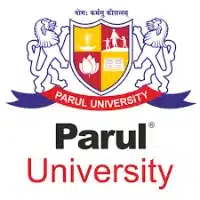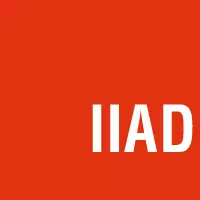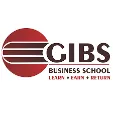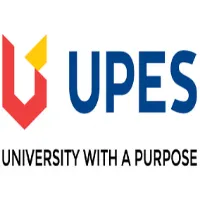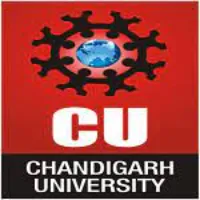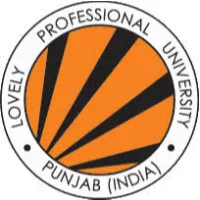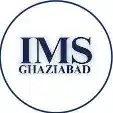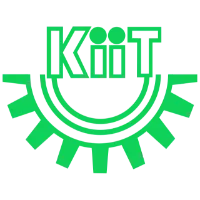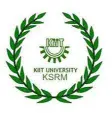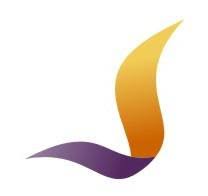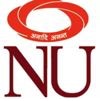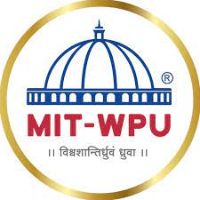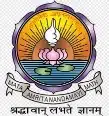Latest Applications Open 2024:
KRUCET 2024 Application Form has been Released for PG Courses through AP PGCET 2024. The Krishna University Common Entrance Test (KRUCET) stands as a pivotal gateway for aspiring students seeking admission into various postgraduate programs offered by Krishna University and its affiliated colleges. KRUCET, conducted annually by Krishna University, serves as a crucial platform for students to pursue their academic aspirations in diverse fields of study, including Humanities & Social Sciences, Sciences, Journalism, and specialized certificate/diploma courses in Yoga and Painting.
With an increasing number of students aspiring to pursue higher education, KRUCET witnesses a significant surge in participation each year, reflecting the growing enthusiasm and craze for the examination. As one of the prominent university-level entrance tests, KRUCET garners attention not only from local aspirants but also from students across different regions seeking quality education and academic opportunities.
The allure of KRUCET lies not only in its comprehensive curriculum but also in its reputation for fairness, transparency, and adherence to academic standards. As a result, KRUCET continues to attract a substantial number of applicants vying for limited seats, making it a highly competitive yet rewarding endeavor for those seeking academic excellence and professional growth.
KRUCET 2024 Notification – Application Released
![]() KRUCET 2024 Application Form has been Released for PG Courses through AP PGCET 2024. Check the KRUCET Application Details.
KRUCET 2024 Application Form has been Released for PG Courses through AP PGCET 2024. Check the KRUCET Application Details.
What is KRUCET?
KRUCET, or the Krishna University Common Entrance Test, is an examination conducted by Krishna University to facilitate admissions into various Post Graduation courses offered at its Campus College in Machilipatnam, the Dr. MRAR P.G Centre in Nuzvid, and affiliated colleges.
Latest Applications For Various UG & PG Courses Open 2024
-
- Parul University | Admissions Open for All Courses 2024. Apply Now
- UPES Dehradun | Admissions Open for All Courses 2024. Apply Now
- Chandigarh University | Admissions Open for All Courses 2024. Apply Now
- LPU 2024 | Admissions Open for All Courses 2024. Apply Now
- IIAD, Delhi | Admissions Open for All Courses 2024. Apply Now
- GIBS, Bangalore | PGDM Applications Open. Package upto 15.5 LPA. Apply Now
- GNIOT, Greater Noida | Admissions Open for All Courses 2023. Apply Now
- The Design Village | Admissions Open for All Courses 2024. Apply Now
- IMS Ghaziabad UC Campus | Admissions Open for All Courses 2024. Apply Now
- KIIT School of Management | Admissions Open for All Courses 2024. Apply Now
- KSRM | Admissions Open for All Courses 2024. Apply Now
- Jaipuria Institute of Management | Admissions Open for All Courses 2024. Apply Now
- NIIT | Admissions Open for All Courses 2024. Apply Now
- MITWPU | Admissions Open for All Courses 2024. Apply Now
- Amrita B.Tech | Admissions Open for All Courses 2024. Apply Now
- KL University | Admissions Open for All Courses 2024. Apply Now
- Alliance MBA | Admissions Open for All Courses 2024. Apply Now
- Alliance UG | Admissions Open for All Courses 2024. Apply Now
These courses span across Humanities & Social Sciences, Sciences, Journalism, and also include certificate/diploma courses in Yoga and Painting. Admission to these programs is granted based on the candidate’s rank in the KRUCET exam, provided they meet the eligibility criteria set by the university. KRUCET is conducted in online mode, also known as computer-based test format.
KRUCET 2024 Highlights
KRUCET 2024 offers a comprehensive overview of the examination’s key features, including its acronym, conducting body, level, category, exam date, mode, duration, official website, and helpline number.
| Exam Name | Krishna University Common Entrance Test |
| Acronym | KRUCET |
| Conducting Body | Krishna University |
| Level | University Level |
| Category | Postgraduate |
| Exam Date | To Be Announced |
| Mode | Offline |
| Medium | English |
| Duration | 90 minutes |
| Official Website | www.krishnauniversity.ac.in |
| Helpline Number | 08672-222677 |
KRUCET 2024 Important Dates
Important dates for KRUCET 2024 include the starting and closing dates of the application form, admit card release, examination date, and result declaration.
| Events | Dates (Announced) |
| Date of Notification | 31st March 2024 |
| Availability of Application Form | 1st April 2024 |
| Last date of submission of Application Form | 4th May 2024 |
| Last date of submission of Application Form with late Fee (Rs 500/-) | 15th May 2024 |
| Last date of submission of Application Form with late fee (Rs 1000/-) | 25th May 2024 |
| Correction of Application Form | 27th to 29th May 2024 |
| Downloading of Admit Card | 31st May 2024 |
| Date of Examination | 10th to 14th June 2024 |
| Preliminary Key | 12th, 13th, 14th, 15th, 16th June 2024 |
| Objections on Preliminary Key | 14th, 15th, 16th, 17th, 18th June 2024 |
| Declaration of Result | To be announced |
KRUCET 2024 Courses Offered
KRUCET 2024 offers a diverse range of postgraduate and diploma courses including engineering, sciences, humanities, and performing arts.
| Exam | Course Offered |
| KRUCET | B.Tech. in Computer Science and Engineering |
| KRUCET | B.Tech. in Electronic Communication and Engineering |
| KRUCET | MA in English |
| KRUCET | MA in Telugu |
| KRUCET | MA in Journalism and Mass Communication |
| KRUCET | M.Sc. in Pharmaceutical Chemistry |
| KRUCET | M.Sc. in Biotechnology |
| KRUCET | M.Sc. in Electronics and instrumentation |
| KRUCET | M.Sc. in Electronics |
| KRUCET | M.Sc. in Organic chemistry |
| KRUCET | M.Sc. in Botany |
| KRUCET | M.Sc. in Zoology |
| KRUCET | M.Sc. in Inorganic Chemistry |
| KRUCET | MBA |
| KRUCET | MCA |
| KRUCET | M.Com. |
| KRUCET | Master’s of Pharmacy |
| KRUCET | M.Tech. in Computer Science and Engineering |
| KRUCET | P.G. Diploma in Kuchipudi Dance |
| KRUCET | Diploma in Kuchipudi Dance |
| KRUCET | Certificate Course in Kuchipudi Dance |
KRUCET 2024 Application Form
The KRUCET 2024 application has been available on the Krishna University’s official website, where students can apply online and provide necessary personal and academic information. In case of missing the deadline, candidates can submit the form with a late fee of Rs 500.
- The KRUCET (Krishna University Common Entrance Test) Application Form is the initial step for candidates aspiring to pursue various PG courses offered by Krishna University and its affiliated colleges.
- It serves as the gateway for applicants to enter the examination process and compete for admissions.
- The application form for KRUCET is typically made available on the official website of Krishna University.
- Candidates are required to fill in their personal, academic, and other necessary details accurately in the application form.
- It is essential for applicants to review the eligibility criteria before filling out the application form to ensure they meet all requirements.
- The application process is conducted online, providing convenience and accessibility to candidates from various locations.
- Applicants must ensure that they provide authentic information and avoid any discrepancies while filling out the form.
- The application fee for KRUCET must be paid as per the instructions provided by the university.
- In case of any errors or omissions in the submitted application form, candidates may have the opportunity to make corrections within the specified time frame.
- It is crucial for candidates to complete the application process within the stipulated deadline to avoid any late fees or disqualification.
- After the submission of the application form, candidates should regularly check for updates and notifications regarding the examination schedule and other relevant information.
- Adhering to the guidelines and instructions provided by Krishna University throughout the application process ensures a smooth and successful registration experience for aspiring candidates.
KRUCET 2024 Application Fees
The KRUCET application fees vary with INR 500 for General category and INR 300 for SC/ST category applicants.
| Category | Application Fee |
| General | INR 500 |
| SC/ST | INR 300 |
How to Fill KRUCET 2024 Application Form
To fill the KRUCET application form, follow these steps:
- Visit the Official Website: Go to the official website of Krishna University.
- Navigate to KRUCET Section: Find the KRUCET section or navigate to the admissions portal on the website.
- Registration: Register yourself by providing necessary details like name, email address, and mobile number.
- Login: After registration, login with the credentials provided during registration.
- Fill Application Form: Fill in the application form with accurate personal, academic, and contact details.
- Upload Documents: Upload scanned copies of your photograph and signature in the prescribed format.
- Review Form: Review the filled-in application form to ensure all information is correct.
- Payment: Pay the application fee online through the available payment options.
- Submission: After successful payment, submit the application form.
- Print Application Form: Take a printout of the submitted application form for future reference.
KRUCET 2024 Eligibility Criteria
The eligibility criteria for KRUCET 2024, set by Krishna University, mandates candidates to fulfill specified requirements before proceeding with the application process. Candidates must ensure compliance with the criteria outlined below before applying for the entrance exam:
- Citizenship: Only individuals with valid proof of Indian citizenship, including any government-issued ID, are eligible to appear for the exam.
- Age: The maximum age limit for obtaining a scholarship is 34 years for SC/ST/BC candidates and 30 years for EBC/Minorities/Disabled candidates, applicable to PG and other courses.
Education Qualification Required for various courses
Here are the educational qualifications required for various courses to appear for KRUCET 2024:
| Course | Eligibility |
| MSc, Biochemistry | BSc, with Chemistry or Biochemistry or BSc, (MLT) as one of the subjects |
| MSc, Botany | BSc, with Botany and Chemistry as two of the common Core subjects or BSc, with Botany as main and Chemistry as ancillary |
| MSc, Organic Chemistry | BSc, with Chemistry as main or one of the three equal subjects in common core system |
| MSc, Analytical Chemistry | BSc, with Chemistry as main or one of the three equal subjects in common core system |
| MSc, Chemistry (Pharmaceutical Chemistry) | BSc, with Chemistry as main or one of the three equal subjects in common core system/B. Pharmacy |
| MSc, Electronics subjects of equal importance | A pass in BSc, with Mathematics, Electronics as the subjects of equal importance |
| MSc, Electronics and Instrumentation (Industry Collaborated Course) | A pass in BSc, With any one of the following subjects: Electronics / Computer Science / Instrumentation. Passed / Appeared in BTech Electronics, BTech (Computer Science), BE(Electronics) / BE (Computer Science), BTech (Instrumentation), etc. |
| MSc, Mathematics | BSc, or BA with Mathematics as one of the three equal subjects or as the main subject |
| MSc, Applied Mathematics | BSc or BA with Mathematics as one of the three equal subjects or as the main subject |
| MSc, Microbiology | BSc, with Microbiology or Botany as one of the three subjects and Chemistry or Biochemistry as another subject |
| MSc, Physics | BSc Mathematics, Physics and any other third subject under common core scheme |
| MSc, Zoology | BSc, with Zoology as one of the subjects |
| MSc, Physical Chemistry | BSc, with Chemistry as main or one of the three equal subjects in common core system |
| MSc, Inorganic Chemistry | BSc, with Chemistry as main or one of the three equal subjects in common core system |
| MSc, Visual Communications | Any Degree |
| MSc, Computer Science | A pass in any Graduate program with computers as one of the subjects of study. |
| MA, Economics | BA with Economics as one of the Subjects |
| MA, English Language & Literature | BA, / BSc,/BCom.,/BBM.,/BCA / BA (O.L.) in Telugu / BA (O.L.) Sanskrit with general English, Degree in Hotel Management, BA with special English in the group subjects |
| MA, Social Work | Any Graduate |
| MA, Psychology | Any Graduate Degree |
| MA, Telugu Language & Literature | BA special Telugu, BAOL. Telugu, BAOL. Sanskrit, BA, / BSc / BCom / BBM/ BCA with Telugu under Part I or Part II, BOL Telugu / Bhasha Praveena with POL |
| MA, Journalism and Mass Communication | A candidate who is a graduate in any stream from a recognized university with a minimum of 40-50% marks in the qualifying examination can apply for admissions to the MA in Journalism and Mass communication programs offered at Krishna University through KRUCET. |
KRUCET 2024 Exam Pattern
The KRUCET Exam Pattern for 2024 features a Pen & Paper-based Test (PBT) with Multiple Choice Questions (MCQs) in English.
| Aspect | Details |
| Exam Mode | Offline (Pen & Paper-based Test) |
| Question Type | Multiple Choice Questions (MCQs) |
| Exam Duration | 1 hour 30 minutes (90 minutes) |
| Total Marks | 100 |
| Marking Scheme | +1 mark for each correct answer; No negative marking for incorrect answers |
| Exam Medium | English |
| Sections | – Section A: 30 MCQs – Section B: 30 MCQs – Section C: 40 MCQs |
| Tie-Breaking | Priority in ranking based on marks obtained in Section C, followed by Section B |
KRUCET 2024 Syllabus
The KRUCET syllabus encompasses a comprehensive range of subjects spanning from biological sciences to computer science and includes topics such as biochemistry, genetics, immunology, programming languages, and database management systems.
MSc, Biochemistry
Section A
- Structure and functions of liver, kidney: Understanding the anatomy and physiology of these organs, including their roles in metabolism, detoxification, and excretion.
- Composition of blood, blood coagulation: Studying the components of blood (plasma, red blood cells, white blood cells, platelets) and the process of blood clotting.
- Digestion and absorption of proximate principles: Examining how macronutrients (carbohydrates, proteins, fats) are broken down and absorbed in the digestive system.
- Biological value of proteins, protein malnutrition disorders: Evaluating the quality of dietary proteins and the consequences of protein deficiency.
- Chemistry and physiological role of vitamins: Understanding the structures, functions, and metabolic roles of vitamins in the body.
- Role of minerals in living systems: Exploring the importance of minerals in various physiological processes such as enzyme function, bone health, and electrolyte balance.
- Structure and physiological roles of hormones: Investigating the molecular structures and functions of hormones in regulating metabolism, growth, and development.
- Basic features of immune response, Lymphoid system, T and B lymphocytes: Understanding the components of the immune system, including lymphoid organs, cells, and their roles in defending against pathogens.
- Cellular and humoral immunity, Classes and structure of immunoglobulin, RIA, ELISA, Vaccines: Studying the mechanisms of immune response, antibody structure and function, as well as diagnostic techniques like radioimmunoassay (RIA) and enzyme-linked immunosorbent assay (ELISA), and vaccination strategies
- Bacteria, Viruses, Organisation of genome in prokaryotes and eukaryotes: Exploring the structure, replication, and genetic organization of bacteria and viruses.
- DNA replication, Biosynthesis of RNA, Protein synthesis, Genetic code: Understanding the processes involved in DNA replication, RNA synthesis, translation, and the genetic code.
- Inhibitors of DNA replication, transcription and translation: Examining compounds that interfere with nucleic acid synthesis and protein synthesis, including antibiotics and chemotherapeutic agents.
- Basic concepts of regulation of gene expression, principles and applications of recombinant DNA technology: Investigating how gene expression is controlled and manipulated, including techniques such as recombinant DNA technology and gene editing.
Section B
- Principles of Enzymology: Studying enzyme kinetics, mechanisms of enzyme action, factors affecting enzyme activity, and enzyme regulation.
- Bioenergetics, Biological Oxidations: Understanding the principles of energy metabolism, including ATP synthesis, redox reactions, and electron transport chains.
- Metabolism of carbohydrates, lipids, proteins, amino acids and nucleic acids: Exploring the biochemical pathways involved in the breakdown and synthesis of macromolecules for energy and biosynthesis.
Section C
- Classification, chemistry and physico-chemical properties of biomolecules: Studying the chemical structures, properties, and functions of amino acids, proteins, nucleic acids, carbohydrates, lipids, and porphyrins.
- Biomembranes–composition and organisation: Examining the structure and function of cell membranes, including membrane proteins, lipids, and transport mechanisms.
- Basic principles of biochemical separation methods: Understanding techniques such as chromatography, centrifugation, and electrophoresis used to separate and analyze biomolecules.
- Basic principles of Colorimetry and spectrophotometry: Learning about methods for quantifying biomolecules based on their absorbance of light at specific wavelengths.
- Radio isotopes and their use in Biochemistry: Exploring the applications of radioisotopes in biochemical research, including tracer studies and radiolabeling techniques.
MSc, Biotechnology
Section A
Physical Sciences and Mathematics:
- Atomic number and atomic weight
- Electronic configurations
- Electronic theory of valency
- Oxidation states, Oxidation numbers
- Common redox and ionic reactions
- Nuclear chemistry, composition of nucleus, binding energy, and packing fraction
- Nuclear reaction
- Uses of radioisotopes
- Electron displacements, bond formation and fission, reaction intermediates
- Nucleophiles and electrophiles
- Alkanes, alkenes, and alkynes, alkyl halides, alcohols, aldehydes, ketones, acids, esters, amino preparations, properties, and reactions, Benzene-aromaticity
Dilute solutions:
- Osmotic pressure, lowering of vapor pressure, depression of freezing point, and elevation of boiling point
- Molecular weight determination in solution, association, and dissociation of solutes
Chemical kinetics:
- Molecularity and order of a reaction, First order, Second order, Rate equation
Electrochemistry:
- Laws of electrolytes, Conductivity of an electrolyte, Hydrolysis of salts, Hydrogen ion concentration, Buffer solutions, Acid-base indicators
- Role of metals in biological systems: Sodium, Potassium, Iron, Zinc, Cobalt, Toxic metals, Arsenic, Mercury, Lead, Inorganic and organic pollutants, Reactivity, Effect of pollutants on human and plant life
- Application of mathematics in biology
- General introduction to computers
Section B
Life Sciences:
- Cell structure and function, Cell organelles, Cell division
- Genetics, Laws of inheritance, Linkage, Crossing over, Polyploidy, Hybrid vigor, Sex determination, Structure and replication of DNA, Genetic recombination, Transcription and post-transcriptional modifications, Concept of genetic code, RNA and ribosomes, Function and role in protein synthesis, Gene cloning, Application of gene cloning in medicine, Gene mapping, Mutations
Cell and its biochemical organization:
- Structure, Chemistry, Properties, Metabolism of carbohydrates, proteins, fats, vitamins, Concept of basic metabolism, Role of enzymes in metabolism, Enzyme kinetics, Inhibition, Regulation
Microbiology:
- Classification and identification of bacteria, viruses, and other microorganisms, Structure and isolation, Culture methods, Role of microbes in carbon, nitrogen, and sulfur cycles in nature
Immunology:
- Organism immunity, Immunity to infectious diseases, Vaccines
Section C
Principles of Biotechnology:
- Principles and applications of centrifugation, Paper and Thin layer chromatography, Paper electrophoresis, Agarose gel electrophoresis and their applications
- Principle and applications of UV-Visible spectroscopy
Microscopic techniques:
- Light and electron microscopy
Fermentation:
- Introduction, Types of fermentation processes (batch, fed-batch, continuous), Types of fermenters (Stirred tank & Air-Lift Fermenters), Feed-culture preparation, Inoculum preparation, Product yield, Product recovery techniques (Biomass separation, Filtration, Centrifugation, Membrane separation), Product purification techniques (Dialysis, Reverse osmosis, Organic solvent extraction), Production of alcoholic beverages (Beer and wine), Antibiotics (Penicillin), Organic acids (Citric acid), Amino acids (Glutamic acid), Single-cell proteins, Probiotics
- Media used for plant tissue culture, Different components of media, Sterilization of media, Callus culture, Meristem culture, Somatic embryogenesis, Synthetic seeds, Transgenic plants and applications, Serum and serum-free media used for maintenance of animal cell lines, Sterilization of media, Maintenance of primary cell line and secondary cell lines, Transgenic animals and their applications
- Definition and scope of environmental biotechnology, Municipal solid waste disposal, Microbiological treatment of municipal sewage and industrial effluents, Waste-water treatment system (Aerobic, anaerobic, and activated sludge process), Bioremediation, Biodegradation
Botany
Section A:
Origin and Evolution of Life:
- An outline of the evolutionary history of life.
Viruses:
- Structure, replication, and transmission.
- Plant diseases caused by viruses and their control.
Bacteria:
- Structure, nutrition, reproduction, and economic importance.
- Plant diseases caused by bacteria and their control.
Cyanobacteria:
- General account of cell structure, thallus organization, and uses.
- Biofertilizers.
Algae and Fungi:
Algae:
- General account, thallus organization, structure, reproduction, classification, and economic importance.
- Specific examples: Oedogonium, Coleochaete, Chara, Ectocarpus, Polysiphonia.
Fungi:
- General characters, classification, and economic importance.
- Specific examples: Albugo, Saccharomyces, Penicillium, Puccinia, Alternaria.
Bryophyta and Pteridophyta:
Bryophytes:
- General characters, classification, alternation of generations.
- Specific examples: Marchantia, Anthoceros, Polytrichum.
Pteridophytes:
- General characters, classification, alternation of generations.
- Specific examples: Rhynia, Lycopodium, Equisetum, Marsilea.
Section B:
Meristems:
- Types, histological organization of shoot and root apices, and theories.
Tissues and Tissue Systems:
- Simple and complex tissues.
Leaf:
- Ontogeny, diversity of internal structure, stomata, and epidermal outgrowths.
Stem and Root:
- Vascular cambium: Formation and function.
- Anomalous secondary growth: General account.
- Specific examples of stem and root structures.
Embryology:
- Anther structure, microsporogenesis, and development of the male gametophyte.
- Ovule structure and types; Megasporogenesis; types and development of the female gametophyte.
- Pollination, fertilization, endosperm development, embryo development.
Palynology:
- Principles and applications.
Taxonomy:
- Introduction to plant systematics, types of classification, systems of classification.
- Comparative account of Bentham & Hooker and Engler & Prantle systems.
Medicinal Botany:
- Ethnomedicine, traditional medicine vs modern medicine.
- Study of select medicinal plants and their pharmacological actions.
Section C:
Cell Biology:
- Plant cell envelopes, nucleus, chromosomes, cell division.
Genetics:
- Mendelism, genetic interactions, linkage, crossing over, mutations, gene expression.
Ecology:
- Concept of ecosystems, energy flow, food chains, ecological adaptations, population ecology, community ecology, production ecology.
Biodiversity and Conservation:
- Concepts of biodiversity, levels, threats, and value.
- Hot spots of India, agro-biodiversity, principles of conservation, role of organizations in biodiversity conservation.
Chemistry
Inorganic Chemistry:
Chemical Bonding:
- Detailed description of L.C.A.O. in M.O theory.
- Bonding, antibonding, and non-bonding orbitals.
- M.O configurations of simple diatomic molecules: H2, N2, O2, C2, B2, F2, CO, NO, and their ions.
pBlock elements:
- Boron Group:
- Electron deficiency and acceptor behavior.
- Boron hydrides, boranes, carboranes, and Borazole.
- Boron and aluminum halides, aluminum alkyls.
- Carbon Group:
- Carbonyls, carbides, silicates, silicones.
- Nitrogen Group:
- Hydrazine, hydroxylamine, and hydrazoic acid.
- Oxides and oxy compounds.
- Oxygen Group:
- Oxygen fluorides, oxides, oxyacids, and halides of sulfur, selenium, and tellurium.
- Peracids of sulfur.
- Halogen Group:
- Oxides and oxyacids of chlorine, polyhalides.
- Basic properties of halogens, pseudohalogens.
- Interhalogen compounds.
- Compounds of noble gases.
Principles of analytical chemistry:
Titrimetry:
- Acid-base titrations, redox titrations, precipitation titrations, complexometric titrations (E.D.T.A. titrations).
- Theory of indicators.
- Qualitative and semi-microanalysis:
- Separation and identification of anions and cations.
Gravimetry:
- Theory of precipitation, co-precipitation, and post-precipitation.
Organic Chemistry:
Reactivity of organic molecules:
- Types of organic reagents and reactions.
- Fission of covalent bonds: electrophilic, nucleophilic, and free radical reagents.
- Substitution, addition, and elimination reactions with examples.
- Bond polarization, inductive and mesomeric effects, acidity, and basicity of organic molecules.
- IUPAC Nomenclature of organic compounds.
- Effect of structure on physical properties.
- Acidity and Basicity.
Alkanes:
- Sources, characteristics, preparations, physical properties, chemical reactivity.
- Cyclic alkanes:
- Preparation, physical and chemical properties.
Alkenes:
- Reactivity, preparation, properties, mechanism of electrophilic addition, cis-trans isomerism, dienes, resonance, polymerization.
Physical Chemistry:
Atomic Structure:
- Wave nature of electron, uncertainty principle, Schrodinger wave equation.
- Dependence of probability functions on distance from the nucleus, shapes of atomic orbitals.
Ionic Equilibria:
- Ostwald’s dilution Law, solubility product, common ion effect.
Gaseous state:
- Ideal gas equation, heat capacities of gases, Law of equipartition of energy.
- VanderWaal’s equation, critical phenomena, isotherms of CO, Joule-Thomson effect.
Solutions:
- Solutions of gases in liquids, Henry’s Law, binary liquid mixtures, partial miscibility, critical solution temperature.
- Deviation from Raoult’s Law, distillation, azeotropic mixtures, steam distillation, distribution law.
Electronics
Section A:
AC Fundamentals:
- Sine wave, average and RMS values.
- The J operator, polar and rectangular forms of complex numbers.
- Phasor diagram, complex impedance and admittance.
- Passive networks: voltage and current sources, KVL and KCL.
- Application to simple circuits (AC and DC) with resistors and sources.
- Node voltage analysis and method of mesh currents.
Network Theorems (DC and AC):
- Superposition Theorem, Thevenin’s Theorem, Norton’s Theorem.
- Maximum power transfer Theorem, Millman Theorem, Reciprocity Theorem.
- Application to simple networks.
RC and RL Circuits:
- Transient response of RL and RC circuits with step input, time constants.
- Frequency response, types of Filters (Low pass, High pass).
- Passive differentiating and integrating circuits.
- Resonance: Series and parallel resonance RLC circuits, resonant frequency, Q factor, Bandwidth, Selectivity.
Semiconductor Devices:
- PN Junction: Depletion region, Junction capacitance, Diode equation.
- Junction diode, Zener diode, Tunnel diode, Varactor diode.
- Bipolar Junction Transistor (BJT): PNP and NPN transistors, BJT static characteristics, configurations, h-parameters.
- Field Effect Transistor (FET): JFET, MOSFET, characteristics, applications.
- Uni Junction Transistor (UJT) and Silicon Controlled Rectifier (SCR).
- Photo Electric Devices: LDR, Photo voltaic cell, Photo diode, Photo transistors, LED.
Section B:
Power Supplies:
- Rectifiers: Halfwave, fullwave, bridge rectifiers.
- Efficiency, Ripple factor, Regulation, Harmonic components.
- Types of filters, choke input, shunt capacitor filter.
- Series and shunt regulated power supplies, Three terminal regulators.
- Switch mode power supply (SMPS).
Amplifiers and Feedback:
- RC Coupled Amplifier: Analysis, frequency response.
- Feedback: Positive and negative feedback, effects.
- Operational Amplifiers: Differential amplifier, characteristics, parameters, circuits, applications.
Communications:
- Modulation: Amplitude, Frequency, Phase modulation.
- Demodulation, AM and FM radio receivers.
Section C:
Digital Electronics:
- Number systems, Logic gates (OR, AND, NOT, etc.), Truth tables.
- Logic families (RTL, DTL, ECL, TTL, CMOS), Universal building blocks.
- Boolean algebra, De Morgan’s Theorems, Simplification techniques.
- Combinational and Sequential circuits, Multiplexer, Decoder, Flip flops.
- Semiconductor memories, Binary counters.
Microprocessor:
- Intel 8085 Microprocessor: CPU, ALU, timing and control unit, registers.
- Instruction set, addressing modes, assembly language programming.
- Timing diagrams, Interfacing peripherals (8255), D/A and A/D converters.
- Stepper motor control, seven segment LED.
Mathematics
Section A:
Differential Equations:
- First-order linear differential equations.
- Exact differential equations, integrating factors.
- Simultaneous differential equations, orthogonal trajectories.
- Differential equations of the first order but not of the first degree.
- Higher-order linear differential equations with constant coefficients.
- Solution of non-homogeneous linear differential equations.
- System of linear differential equations.
Solid Geometry:
- Equations of planes, lines, and spheres.
- Intersection of planes, sphere through given points, and circles.
- Cones, cylinders, and conicoids.
- Tangent planes, power of a point, radical plane.
Section B:
Groups:
- Binary operations, elementary properties.
- Finite groups, subgroups, cyclic subgroups.
- Permutations, cycles, even and odd permutations.
- Cyclic groups, isomorphism, Cayley’s theorem.
- Normal subgroups, factor groups, homomorphism.
Rings:
- Definition, fields, integral domains, divisors of zero.
- Cancellation laws, characteristic of a ring, non-commutative rings.
- Matrices over a field, homomorphism of rings.
- Maximal and prime ideals, prime fields.
Real Numbers:
- Completeness properties of R, supremum property.
- Sequences and series, limit theorems, monotonic sequences.
- Subsequences, Bolzano-Weierstrass theorem, Cauchy’s Criterion.
- Absolute convergence, uniform continuity.
Differentiation and Integration:
- The derivative, mean value theorems, L’Hospital Rule.
- Taylor’s Theorem, Riemann integration, Riemann integral.
- Riemann integrable functions, fundamental theorem.
Section C:
Linear Algebra and Vector Calculus:
- Vector spaces, subspaces, linear combinations.
- Linear independence, basis of vector space, dimension.
- Linear transformations, range, null space, rank, and nullity.
- Inner product spaces, Euclidean and unitary spaces.
- Multiple integrals, vector differentiation, space curves.
- Gradient, divergence, curl operators, vector integration.
- Theorems of Gauss and Stokes, Green’s theorem.
Microbiology
Section A:
History of Microbiology:
- Contributions of Leeuwenhoek, Pasteur, Robert Koch, Iwanowski.
- Typical structure of prokaryotic and eukaryotic cells.
Bacteria:
Morphology, structure, Gram-staining, Acid-fast staining.
Cyanobacteria:
- General characters, importance.
Actinomycetes and Mycoplasmas:
- General features.
Viruses:
- Structure of TMV and T4 phages, lytic and lysogenic cycles, transmission.
Fungi:
- General characters, reproduction, classification, importance.
- Edible fungi: SCP, mushroom cultivation.
Microalgae:
- General characters, reproduction, importance.
Protozoa:
- General characters, importance.
Section B:
Culturing of Bacteria:
- Sterilization techniques, synthetic and complex media, pure cultures, preservation.
Bacterial Growth:
- Growth phases, factors affecting growth.
Metabolic Diversity:
- Photoautotrophs, Photoheterotrophs, Chemolithotrophs, Chemoheterotrophs.
- Respiration: Aerobic (Glycolysis, Kreb’s cycle, Electron transport system) and anaerobic systems.
- Fermentations: Alcohol and lactic acid fermentations.
Genetics:
- Structure of DNA (Watson and Crick model), Types of RNA and their functions.
- Gene concept, genetic code, protein synthesis.
- Types of gene transfer in Bacteria: Transformation, Transduction, Conjugation.
- Mutations: Spontaneous and induced mutations, significance.
Section C:
Food Microbiology:
- Food spoilage: Fruits, vegetables, cereals, eggs, meat, fish.
- Preservation of foods: Low temperatures, high temperatures, drying, chemical preservatives, radiation.
- Dairy Microbiology: Microorganisms in milk, quality testing, pasteurization, curd, cheese production.
Fermentation:
- Fermentation equipment, screening of microbes, Batch, fed-batch, continuous types.
- Fermentative production of Antibiotics (Penicillin, Streptomycin), Citric acid, Acetic acid.
- Production of beer and wine.
Environmental Microbiology:
- Microorganisms in soil and water.
- Role in decomposition of organic matter (carbon cycle), Nitrogen transformations (Ammonification, nitrification, denitrification).
- Nitrogen fixation: Symbiotic and non-symbiotic processes.
Diseases and Control Measures:
- Diseases caused by bacteria (Cholera, Typhoid), viruses (Polio, AIDS), protozoa (Amoebic dysentery, Malaria).
- Prophylactic measures: Quarantine, sanitation, prevention, Immunization.
- Chemotherapy: Antibiotics, synthetic drugs.
Physics
Section A: Vector Analysis
- Scalar and vector fields.
- Gradient of a scalar field, divergence, and curl of a vector field.
- Vector integration: line, surface, and volume integrals.
- Stokes, Gauss, and Green’s theorems with simple applications.
Mechanics of Particles:
- Laws of motion, including the motion of variable mass systems and rockets.
- Conservation of energy and momentum.
- Collisions in two and three dimensions, including the concept of impact parameter and scattering cross-section.
Mechanics of Rigid Bodies:
- Definition of a rigid body, rotational kinematic relations.
- Equations of motion for rotating bodies, angular momentum, and inertial tensor.
- Euler’s equation, precession of a top, gyroscope, precession of the equinoxes.
Mechanics of Continuous Media:
- Elastic constants of isotropic solids, Poisson’s ratio, and expression for Poisson’s ratio.
- Classification of beams, types of bending, shearing force, bending moment.
- Central forces, gravitational potential, motion under inverse square law, Kepler’s laws, Coriolis force.
Special Theory of Relativity:
- Galilean relativity, Michelson-Morley experiment, postulates of special relativity.
- Lorentz transformation, time dilation, length contraction, mass-energy relation, four-vector formalism.
Fundamentals of Vibrations:
- Simple harmonic oscillator, torsion pendulum, compound pendulum.
- Damped and forced oscillations, energy considerations, amplitude resonance.
- Complex vibrations, Fourier theorem, vibrations of bars, vibrating strings.
Ultrasonics:
- Properties of ultrasonic waves, production, detection, and applications of ultrasonics.
- Velocity of ultrasonics in liquids, determination of wavelength.
Section B:
Kinetic Theory of Gases:
- Maxwell’s law of distribution of molecular speeds, Toothed Wheel Experiment, transport phenomena.
Thermodynamics:
- Reversible and irreversible processes, Carnot’s engine, second law of thermodynamics, entropy, Kelvin’s and Clausius statements.
- Thermodynamic potentials, Maxwell’s equations, Joule-Kelvin effect, low-temperature physics.
Quantum Theory of Radiation:
- Black body radiation, Planck’s law, Wein’s displacement law, Rayleigh-Jean’s law.
- Quantum theory of radiation, Planck’s radiation law, measurement of radiation, types of pyrometers.
Statistical Mechanics:
- Introduction to statistical mechanics, ensembles, Maxwell-Boltzmann, Bose-Einstein, and Fermi-Dirac distribution laws.
- Black Body Radiation, comparison of distribution laws, application to white dwarfs and neutron stars.
Matrix Methods in Paraxial Optics:
- Introduction, matrix method, imaging by a spherical refracting surface, optical systems with lenses, aberrations.
Interference:
- Principle of superposition, coherence, interference by division of wavefront and amplitude, Newton’s rings, Michelson interferometer.
Diffraction:
- Fraunhofer and Fresnel diffraction, single and double-slit diffraction, resolving power of gratings.
Polarization:
- Methods of polarization, Brewster’s law, Malus’s law, Nicol prism, optical activity, and applications.
Laser, Fiber Optics, and Holography:
- Principles of lasers, types of lasers, fiber optics, holography, and applications.
Section C:
Electrostatics:
- Gauss’s law and its applications, mechanical force on a charged conductor, dielectrics, and capacitance.
Magneto statics:
- Magnetic induction and field, permeability, susceptibility, moving charge in electric and magnetic fields, electromagnetic induction.
Varying and Alternating Currents:
- Growth and decay of currents in LR, CR, and LCR circuits, resonance, AC and DC motors, Maxwell’s equations, electromagnetic waves.
Basic Electronics:
- Formation of electron energy bands in solids, semiconductor physics, p-n junction diode, transistors, amplifiers, digital principles, and logic gates.
Zoology
Section A:
Protozoa to Annelida:
- Protozoa: General characters, classification up to classes.
- Type study: Paramecium.
- Phylum Porifera: General characters, classification up to classes.
- Type study: Sycon; Canal system in Sponges.
- Phylum Coelenterata: General characters, classification up to classes.
- Type study: Obelia; Polymorphism in Coelenterates; Corals and Coral reef formation.
- Phylum Platyhelminthes: General characters, classification up to classes.
- Type study: Fasciola hepatica.
- Phylum Nemathelminthes: General characters, classification up to classes.
- Type study: Ascaris lumbricoides.
- Phylum Annelida: General characters, classification up to classes.
- Type study: Leech; Coelom and coelomoducts in Annelids.
Arthropoda to Hemichordata:
- Phylum Arthropoda: General characters, classification up to classes.
- Type study: Prawn; Peripatus – Characters and Significance.
- Phylum Mollusca: General characters, classification up to classes.
- Type study: Pila; Pearl formation in Molluscs.
- Phylum Echinodermata: General characters, classification up to classes.
- Type study: Starfish.
- General characters of Hemichordata: Structure and affinities of Balanoglossus.
Cell Biology:
- Cell theory.
- Ultrastructure of Animal cell.
- Structure of Plasma membrane – Fluid-mosaic model.
- Transport functions of Plasma membrane.
- Structure and functions of Endoplasmic reticulum, Golgi body, Ribosomes, lysosomes, and Mitochondrion.
- Chromosomes: nomenclature, types, and structure.
- Giant chromosomes: Polytene and Lampbrush chromosomes.
- Cell division: Cell-cycle stages, Mitosis, Meiosis, and their significance.
- Biomolecules of the cell: Carbohydrates, Proteins, Lipids, Nucleic acids.
Section B:
Protochordata to Amphibia:
- Protochordates: Salient features of Urochordata and Cephalochordata.
- Structure and life-history of Herdmania, Significance of retrogressive Metamorphosis.
- General organization of Chordates.
- General characters of Cyclostomes, fishes, and Amphibia.
- Type study: Scoliodon, Rana.
- Parental care in amphibians.
Reptilia to Mammalia:
- General characters and classification of Reptilia.
- Type study: Calotes.
- General characters and classification of Aves.
- Type study: Pigeon (Columbia livia).
- Dentition in Mammals.
- Embryology: Spermatogenesis, Oogenesis, Fertilization, Types of eggs, Types of cleavages, Development of frog up to gastrulation, Foetal membranes, Placenta, Regeneration.
Ecology:
- Biogeochemical cycles.
- Definition of Community, Habitat, and ecological niche.
- Community interactions: Competition, predation, mutualism, commensalism, and parasitism.
- Ecological succession: Primary and secondary, Population ecology, Zoogeography.
Section C:
Physiology of Digestion:
- Definition and types of digestion.
- Digestion of Carbohydrates, proteins, lipids, and cellulose.
- Absorption and assimilation of digested food materials.
- Gastrointestinal hormones- control of digestion.
Physiology of Respiration:
- Types of respiration, Structure of mammalian lungs, Gaseous exchange, Transport of oxygen and CO2, Cellular respiration.
Physiology of Circulation:
- Open and closed circulation, Structure of mammalian heart, Myogenic and neurogenic hearts, Regulation of heart rate.
Physiology of Excretion:
- Definition of excretion, Forms of nitrogenous waste material, Gross organization of mammalian excretory system, Structure and function of Nephron.
Physiology of Muscle Contraction:
- General structure and types of muscles, Ultrastructure of skeletal muscle, Sliding filament mechanism of muscle contraction.
Physiology of Nerve Impulse:
- Structure of nerve cell, Nature of nerve impulse, Properties of nerve impulse, Conduction of nerve impulse along an axon, Structure of synapse, Mechanism of synaptic transmission.
Physiology of Endocrine System:
- Relationship between hypothalamus and pituitary gland, Hormones of hypothalamus, Hormones of Adenohypophysis and Neurohypophysis, Hormones of pineal gland, thyroid gland, parathyroid, thymus, adrenal, and pancreas, Endocrine control of mammalian reproduction.
Physiology of Homeostasis:
- Concept and mechanism of Homeostasis.
Genetics:
- Mendel’s laws, Genetic Interactions, Identification of DNA as the genetic material, Central dogma of molecular biology, Human karyotyping, chromosomal disorders, Organic Evolution.
Computer Science
Section –A
PC Software and ‘C’ Programming:
- Fundamentals of Computers: Computer definition, Types of Computer, Logical Organization of a Digital Computer.
- Memory: Main Memory (RAM, ROM, Cache), Secondary Memory (Magnetic type, Floppy disk, Hard disk, Compact disk).
- Input devices, Output devices.
- Operating system: Definition, functions, Types (Batch processing, Multi Programming, Multi-tasking, Time sharing, Real-time operating systems).
- Introduction to DOS, DOS internal commands, DOS External Commands.
- Introduction to Windows, Desktop, File, Folder, My Computer, My documents, Recycle bin, Internet Explorer, Windows Explorer.
- Types of Programming Languages.
Word and MS Power Point:
- Word Basics: Creating, Editing, Formatting, Printing documents.
- Formatting Text and Documents: Auto format, Line spacing, Margins, Borders, Shading.
- Working with Headers and Footers.
- Tables, Graphics, Templates, Macros, Mail Merge.
- MS Power Point Basics: Creating, Editing, Formatting, Printing presentations.
MS Excel and MS Access:
- MS Access: Creating Databases, Tables, Forms, Queries, Reports.
- Relational Databases, Data Structures, Sorting, Stacks, Queues, Linked List, Binary Trees, Graphs.
- MS Excel Basics: Creating, Editing, Formatting, Sorting, Charts, Graphics, Functions.
- C Language Fundamentals: Introduction, Data types, Variables, Arithmetic Expressions, Decision making, Looping, Functions, Arrays, Pointers, Operations on Bits, Pre-processor, Data Type conversions, Input and Output Operations.
Section-B:
Object-Oriented Programming with Java and Data Structures:
- Fundamentals of Object-Oriented programming, Java Evolution, Overview of Java Language.
- Constants, Variables, Data types, Operators, Expressions, Decision Making, Looping.
- Class, Objects, Methods, Inheritance, Packages, Interfaces, Arrays, Strings, Vectors, Multithreaded programming, Applets.
- Data Structures: Sorting, Stacks, Queues, Linked List, Binary Trees, Graphs.
Section-C:
Database Management Systems:
- Introduction and Fundamentals of Database Systems.
- Data Models, Relational Database Model, Data Modeling and Normalization.
- Interaction with Databases, SQL, Advanced SQL, Database Design.
- Transaction Management, Concurrency Control, Distributed Database Management Systems.
- Data Warehouse Concepts, Database Administration.
KRUCET 2024 Preparation Tips
Here are some preparation tips for KRUCET:
- Familiarize yourself with the syllabus: Understand the topics covered in each section of the KRUCET syllabus to create a structured study plan.
- Time management: Allocate sufficient time to each subject based on your strengths and weaknesses, ensuring balanced preparation across all sections.
- Practice previous years’ question papers: Solve past KRUCET papers to get acquainted with the exam pattern, types of questions asked, and time management during the actual exam.
- Refer to standard textbooks: Use recommended textbooks and study materials to cover each topic comprehensively and gain an in-depth understanding.
- Make concise notes: Prepare short notes while studying, highlighting key concepts, formulas, and important points for quick revision before the exam.
- Mock tests and online quizzes: Take regular mock tests and online quizzes to assess your preparation level, identify weak areas, and improve your speed and accuracy.
- Revision: Plan regular revision sessions to reinforce your learning and ensure better retention of information.
- Stay updated: Keep yourself updated with current affairs, especially in subjects like general knowledge and current affairs, which may be part of the exam.
- Maintain a healthy lifestyle: Ensure proper sleep, nutrition, and exercise to stay physically and mentally fit during the preparation period.
- Stay positive and confident: Believe in yourself and maintain a positive attitude throughout your preparation journey, keeping calm and focused during the exam.
KRUCET 2024 Admit Card
The KRUCET 2024 Admit card will be available soon on the official website. Candidates are required to download the admit card exclusively through the official website; it will not be dispatched via post. Anticipated to be released in the last week of July 2024, the admit card will be uploaded at least 15 days before the scheduled exam date. Essential details such as the exact exam date, time, and exam center will be printed on the KRUCET 2024 Admit Card. Stay tuned to the official website for further updates regarding the release of the admit card.
How to download the KRUCET 2024 Hall Ticket
To download the KRUCET Hall Ticket, follow these steps:
- Visit the Official Website: Go to the official website of Krishna University or the dedicated KRUCET portal.
- Navigate to Hall Ticket Section: Look for the “Hall Ticket” or “Admit Card” section on the homepage.
- Login or Registration: You may need to log in using your credentials such as application number, date of birth, or other details provided during the registration process. If you haven’t registered yet, complete the registration process as required.
- Find the Download Link: Once logged in, find the download link for the KRUCET Hall Ticket. It may be prominently displayed on the website or available under a specific section related to admit cards or examinations.
- Enter Details (if required): If prompted, enter the necessary details such as application number, date of birth, or any other information to access your hall ticket.
- Download the Hall Ticket: After entering the required details, click on the “Download” or “Print” button to download your KRUCET Hall Ticket.
- Verify Details: Once downloaded, carefully check all the details mentioned on the hall ticket, including your name, roll number, exam date, time, and venue.
- Print the Hall Ticket: After verifying the details, take a printout of the hall ticket. Ensure that the printout is clear and legible.
- Keep the Hall Ticket Safe: Preserve the printed copy of the hall ticket safely. It will be required to be presented at the examination center on the day of the KRUCET exam.
- Follow Instructions: Read any additional instructions mentioned on the hall ticket carefully and adhere to them.
KRUCET 2024 Result
The KRUCET 2024 results will be accessible on the official website. The exact release date has not been announced by the conducting authority yet. Stay updated here for the latest information on KRUCET 2024 result dates, as soon as they are disclosed by the authority.
How to Check the KRUCET 2024 Result
To check the KRUCET result, follow these steps:
- Visit the Official Website: Navigate to the official website of Krishna University or the designated KRUCET portal.
- Locate Result Section: Look for the “Results” or “KRUCET 2024 Result” section on the homepage of the website.
- Access Result Portal: Click on the appropriate link to access the result portal for KRUCET 2024.
- Enter Credentials: Provide your credentials such as roll number, registration number, or any other required details as instructed.
- Submit Information: After entering the necessary details, submit the information.
- View Result: The KRUCET 2024 result will be displayed on the screen.
- Review Carefully: Carefully review your result to ensure accuracy in the displayed information.
- Download or Print: Download the result or take a printout for future reference if needed.
- Retain Record: Keep a soft copy or a screenshot of the result for your records.
- Stay Informed: After checking the result, stay updated on any further instructions or notifications regarding counselling procedures or document verification.
KRUCET 2024 Counselling
For KRUCET 2024 Counselling, admission will be based on KRUCET 2024 Rank, subject to meeting eligibility criteria, including minimum percentage of marks in the qualifying examination, followed by certificate verification as per the schedule available on the website post results announcement.
Documents required for KRUCET 2024 Counselling
KRUCET 2024 Rank Card: A printed copy of the KRUCET 2024 Rank Card indicating the candidate’s rank in the entrance examination.
- KRUCET 2024 Hall Ticket: A printed copy of the KRUCET 2024 Hall Ticket used to appear for the entrance examination.
- Qualifying Examination Mark Sheet and Passing Certificate: Original and photocopies of mark sheets and passing certificates of the qualifying examination (e.g., Bachelor’s degree for PG courses) as prescribed by the university.
- Transfer Certificate (TC): Original and photocopy of the Transfer Certificate issued by the last institution attended.
- Conduct Certificate (CC): Original and photocopy of the Conduct Certificate obtained from the last institution attended, confirming good conduct.
- Provisional Certificate (if available): Original and photocopy of the Provisional Certificate issued by the last institution attended, if available.
- Caste Certificate (if applicable): Original and photocopy of the Caste Certificate issued by a competent authority for candidates belonging to reserved categories.
- Income Certificate (if applicable): Original and photocopy of the Income Certificate issued by a competent authority for candidates seeking fee concessions based on their family income.
- Residence Certificate/ Domicile Certificate: Original and photocopy of the Residence Certificate or Domicile Certificate issued by the concerned authority, as per the university’s requirements.
- Passport Size Photographs: Two recent passport-size photographs of the candidate.
- Any other relevant certificates: Candidates may be required to submit additional documents as specified in the counselling notification or admission guidelines issued by the university.
KRUCET 2024 Contact Information
Contact Krishna University Common Entrance Test (KRUCET) at the following details.
| Contact Details | |
| Address | Krishna University, Rudravaram Village, Machilipatnam, Andhra Pradesh, Pin: 521001 |
| Email-ID | registrarku@gmail.com |
| Contact Number | 08672-222677 |
Conclusion
The Krishna University Common Entrance Test (KRUCET) serves as a crucial gateway for aspiring students seeking admission to various postgraduate courses offered by Krishna University and its affiliated colleges. Through KRUCET, candidates have the opportunity to pursue advanced studies in a diverse range of fields including Humanities & Social Sciences, Sciences, Journalism, and specialized certificate/diploma courses.
Latest Applications For Various UG & PG Courses Open 2024
-
- Parul University | Admissions Open for All Courses 2024. Apply Now
- UPES Dehradun | Admissions Open for All Courses 2024. Apply Now
- Chandigarh University | Admissions Open for All Courses 2024. Apply Now
- LPU 2024 | Admissions Open for All Courses 2024. Apply Now
- IIAD, Delhi | Admissions Open for All Courses 2024. Apply Now
- GIBS, Bangalore | PGDM Applications Open. Package upto 15.5 LPA. Apply Now
- GNIOT, Greater Noida | Admissions Open for All Courses 2023. Apply Now
- The Design Village | Admissions Open for All Courses 2024. Apply Now
- IMS Ghaziabad UC Campus | Admissions Open for All Courses 2024. Apply Now
- KIIT School of Management | Admissions Open for All Courses 2024. Apply Now
- KSRM | Admissions Open for All Courses 2024. Apply Now
- Jaipuria Institute of Management | Admissions Open for All Courses 2024. Apply Now
- NIIT | Admissions Open for All Courses 2024. Apply Now
- MITWPU | Admissions Open for All Courses 2024. Apply Now
- Amrita B.Tech | Admissions Open for All Courses 2024. Apply Now
- KL University | Admissions Open for All Courses 2024. Apply Now
- Alliance MBA | Admissions Open for All Courses 2024. Apply Now
- Alliance UG | Admissions Open for All Courses 2024. Apply Now
The exam, conducted at the university level, follows a well-defined syllabus and exam pattern, ensuring fair assessment of candidates’ knowledge and skills. Aspiring candidates are advised to thoroughly prepare for the exam by familiarizing themselves with the syllabus, practicing mock tests, and solving previous years’ question papers. By adhering to a structured preparation strategy and staying focused, candidates can aim to achieve success in the KRUCET exam, thereby paving the way for a rewarding academic journey at Krishna University and beyond.
For any other queries about KRUCET 2024, you can leave your queries below in the comment box.
KRUCET 2024 FAQ
What is KRUCET?
KRUCET stands for Krishna University Common Entrance Test, which is a university-level entrance exam conducted for admission to various postgraduate courses offered by Krishna University and its affiliated colleges.
Who conducts KRUCET?
KRUCET is conducted by Krishna University, located in Machilipatnam, Andhra Pradesh, India.
What are the eligibility criteria for KRUCET?
The eligibility criteria for KRUCET vary depending on the course applied for. Generally, candidates must have a bachelor’s degree in the relevant field with a minimum aggregate score from a recognized university.
How can I apply for KRUCET?
Candidates can apply for KRUCET by filling out the online application form available on the official website of Krishna University within the specified dates.
What is the exam pattern of KRUCET?
The exam pattern of KRUCET typically includes multiple-choice questions (MCQs) covering subjects related to the respective courses. The duration and marking scheme may vary.
Is there any negative marking in KRUCET?
The presence of negative marking in KRUCET depends on the specific instructions provided by the conducting authority. Candidates are advised to check the exam guidelines for details.
What is the syllabus for KRUCET?
The syllabus for KRUCET includes topics from various subjects depending on the course applied for. Candidates should refer to the official notification or website for the detailed syllabus.
Are there any specific books recommended for KRUCET preparation?
Yes, there are several books available in the market specifically designed for KRUCET preparation. Candidates can choose books based on their course and preferences.
Can I apply for multiple courses through KRUCET?
Yes, candidates can apply for multiple courses offered through KRUCET by filling out separate application forms for each course.
Is there any reservation policy for KRUCET?
Yes, Krishna University follows the reservation policy as per the guidelines of the Government of Andhra Pradesh. Reserved categories include SC, ST, OBC, PWD, etc.
How can I check my KRUCET result?
KRUCET results are typically announced on the official website of Krishna University. Candidates can check their results by logging in with their credentials.
What are the counselling procedures after the KRUCET results are declared?
After the KRUCET results are declared, eligible candidates are called for counselling sessions conducted by Krishna University. During counselling, candidates can select their desired courses and colleges based on their ranks and preferences.

My name is Farheen Ansari, and I am a dedicated writer passionate about covering the latest updates in the education sector, specifically Universities and Entrance Examinations. Her interest in the field and commitment to staying up-to-date with the latest developments enable her to provide insightful and informative coverage. With a focus on helping students and parents make informed decisions about their academic pursuits, writing is driven by a desire to share knowledge and promote learning. Join us as we explore the exciting world of education, a trusted source of information and an expert in her field.


